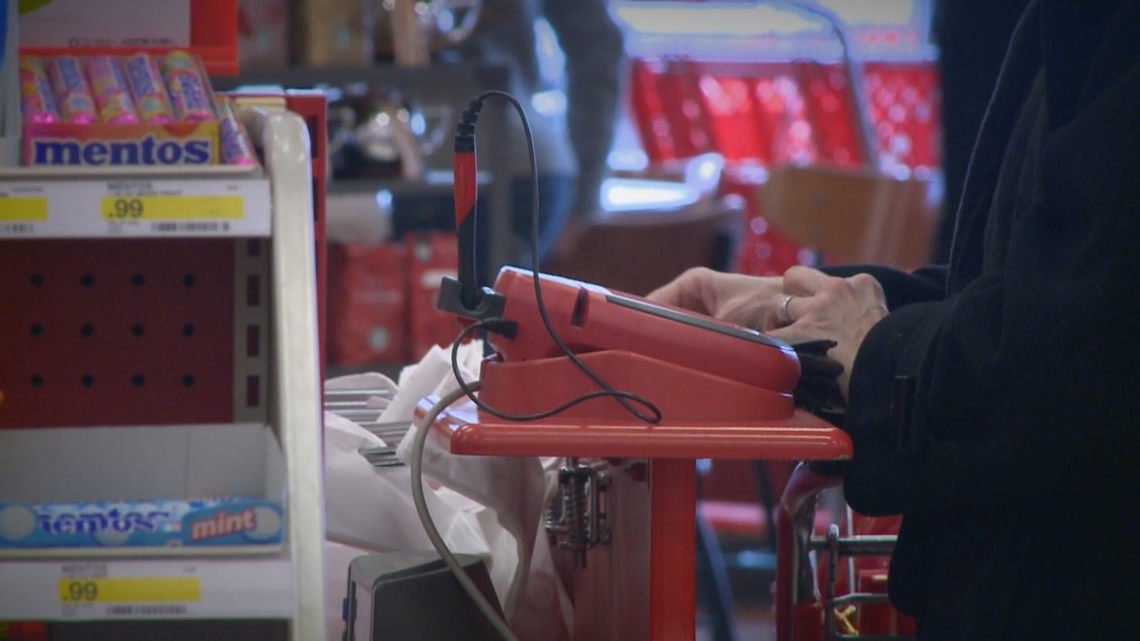Kare11
Stone Arch Bridge downtown side to close next week


Repairs on the bridge began in April, with crews repairing and replacing stone, replacing the mortar, and making other fixes to the historic structure.
MINNEAPOLIS — Starting next week the downtown side of the Stone Arch Bridge will be closed as repairs continue on the popular walking path.
Work began in April, with crews repairing and replacing stone, replacing the mortar on the entire bridge, and making other repairs as needed. According to the Minnesota Department of Transportation (MnDOT), this work will slow deterioration and improve the conditions of the bridge.
While the bridge is being worked on, people can still walk and bike halfway across. The first side to close was the St. Anthony Main side, which will be reopening after the downtown side closes on Dec. 2.
The Stone Arch Bridge was built in the 1880s by James J. Hill’s Great Northern Railroad. At its peak, it brought 80 passenger trains a day to Union Station, according to the Minneapolis Parks Board. Ownership of the bridge was transferred to Hennepin County in the 1990s and it was converted to a pedestrian and bicycle path.
The downtown side will be closed through the fall of 2025, and MnDOT anticipates work being done and the bridge reopening by the spring of 2026.
Kare11
Downtown Minneapolis leaders outline plans for the next decade


More than 200 stakeholders contributed to the 2035 plan, agreeing on four strategic priorities.
MINNEAPOLIS — The Minneapolis Downtown Council this week released a 10-year plan for the area dubbed Downtown by Design.
The organization has released 10 and 15-year plans since its 1956 inception.
The last plan came out in 2010 when Ben Shardlow was still in school for urban planning. He says reading it inspired him to work for the MDC. Today, he is chief of staff and has worked there for 12 years.
He says the 2010 plan was largely successful. It included building a new Vikings stadium, improving transit options and improving pedestrian experiences.
“All of those things have been implemented over the last 15 years,” Shardlow said.
More than 200 stakeholders contributed to the 2035 plan, agreeing on four strategic priorities: Neighborhood Cultivation, Foundational Safety, Hassle-Free Systems and Irresistible Vibe.
The full plan can be viewed online.
“That involves some office buildings being converted to residential use, more retail that’s more resident oriented,” Shardlow explained. “Are the coffee shops open on the weekend? Is there a hardware store? Where do I get my dry cleaning? So it does get down to that kind of nitty-gritty detail, just making sure that all the conveniences you’d expect living downtown are available.”
The plan includes converting 3 million square feet of commercial space into residential units. It also calls for a redesign and “full reconstruction” of 1st Ave. N.
Nearly 60,000 people live downtown, and that’s nearly double 2010’s population of 35,000. Doubling the residential population was another goal within the old 2010 plan.
With more residential and retail growth expected over the next decade, Shardlow says Hassle-Free Systems will also be priority.
“We are just celebrating the fact that there is so much improved transit service coming to downtown,” Shardlow said. “$6.7 billion worth of investment in Light Rail and Bus Rapid Transit extensions.”
Downtown leaders and stakeholders would also like to see improved navigation systems in the skyways.
Another part of the plan involves transforming the riverfront and reimagining the 8-acre post office site on First Street near the Mississippi River into a place for public enjoyment.
“There’s a rendering in the plan that shows the rooftop turned into kind of a park in the sky, which is just one idea, but it’s fun to see and fun to visualize and fun to imagine the possibilities,” Shardlow said.
Elsewhere downtown, there are plans for a permanent ice rink to help make Minneapolis more of a “winter city.” The location is yet to be determined.
Pursuing the Michelin Star guide “to showcase Minneapolis’ world-class restaurant scene” is also on the agenda.
There are many initiatives and projects. Some are ideas while others are already underway. Regardless of the status, it will be important to keep everyone safe.
Shardlow says Foundational Safety means advancing a modern, layered public safety system that accounts for prevention and outreach in addition to law enforcement.
“There is a new Safety Communications Center that’s under construction in the new first precinct facility over by the Minneapolis Convention Center,” he said. “It’s a really important central dispatch for all of the non-law enforcement services we have out on the street, where [there are] ambassadors that are focused more on hospitality or street outreach workers or social workers. We’ve really come a long way in building that kind of more integrated layered safety workforce.”
Kare11
P!nk ‘foster fails’, adopts rescue dog from Minneapolis shelter


The pop star started fostering the pup during her tour stop in Minneapolis in October.
MINNEAPOLIS — It’s hard to say no when faced with adorable puppy dog eyes.
Pop star P!nk would agree, as she announced Wednesday that she is adopting her Minneapolis foster pup. P!nk got the puppy from local rescue The Bond Between in October and intended to keep him for a few weeks to raise awareness of fostering and have some company during her tour.
The dog, named Graham Cracker, won over the singer within a month. In an Instagram post Wednesday, P!nk thanked The Bond Between and promoted the rescue’s fundraising efforts for “Give to the Max Day.” The nonprofit says they raised over $900,000.
Rachel Mairose, the organization’s founder, initially couldn’t believe a representative from P!nk’s team had reached out about fostering one of their rescue puppies.
“My initial reaction was this is a scam… this can’t be real,” Mairose said with a laugh.
The Bond Between, a local nonprofit, has helped over 30,000 pets find homes, but the story of Graham Cracker — a puppy born in the woods under a collapsed deer stand in Arkansas — stands out.
Mairose sees this as more than just a celebrity story though. It’s an opportunity to raise awareness about shelter animals and fostering.
“I think when people like P!nk give their name and platform to organizations that need help, it just goes to show what kind of human they actually are,” she said.
The organization currently supports approximately 500 animals. Their primary need remains consistent: more foster families willing to take in animals.
If you’re looking to foster or adopt a pet check out The Bond Between’s website at this link.
Kare11
How will Trump’s proposed tariffs affect you?


On Monday, President-elect Donald Trump announced on social media his plan to impose tariffs on goods from Mexico, Canada and China.
MINNEAPOLIS — From foods to clothing, appliances, electronics, vehicles and so much more, the United States is the largest importer of goods in the world, according to the Office of United States Trade Representative.
On Monday, President-elect Donald Trump announced on social media his plan to impose 25% tariffs on all goods from Mexico and Canada, and an additional 10% on all imports from China, if those countries do not take measures to mitigate illegal immigration and drug trafficking into the United States.
“It’s not the foreign producer who pays this tax, but instead it’s the domestic company that’s actually importing the good,” explained University of St. Thomas Associate Professor in Economics Tyler Schipper.
He said the proposed tariffs—essentially taxes on goods coming in from other countries—would drive up prices for consumers if implemented.
“I would hope that whenever somebody hears the word ‘tariffs,’ they hear ‘consumer tax,'” Schipper said. “Higher prices at the border means higher prices for imported goods.”
Schipper added that consumers won’t see the impacts immediately, as companies will stockpile their products ahead of the tariffs being implemented.
“It’s kind of further down the line,” he explained. “The three months, six months, years down the line, when you start to see more of these price increases once those stockpiles start to run out and importers start having to actually face those tariffs.”
The 25% tariff proposed by Trump would be a dramatic shift from the current average 2% tariff on most goods imported into the U.S., Schipper said. He added there could be some truth to the theory that Trump is using the proposed tariffs as a negotiation tactic before coming into office, but it’s difficult to know.
“If this is a negotiating position, what you’ll likely see is one or both of Mexico and Canada may end up being exempt from these tariffs—if one of them does more to limit illegal immigration or limit drugs coming over the border as was suggested in the Truth Social post.”
Schipper added that it’s not only imports that would be impacted. According to the Minnesota Department of Agriculture, Minnesota is the fourth largest agricultural exporting state, with commodities such as soybeans and corn bringing in roughly $9 billion per year.
Gov. Tim Walz addressed the proposed tariffs at an event Tuesday morning.
“If trade goes in a bad way and we end up in a trade war with our biggest trading partners, agriculture pays the heaviest price; states like Minnesota pay the heaviest price for that,” he said.
Leaders in China and Mexico have pushed back against Trump’s accusations. The Chinese Embassy in Washington cautioned on Monday that there would be losers on all sides if a trade war commences.
In a trade war, Schipper said, no one wins.
“That’s what we saw in 2018. There were large agricultural tariffs imposed against the United States, and farmers across the country often had trade relationships broken that they built up over long periods of time because their exports were no longer competitive globally.”




